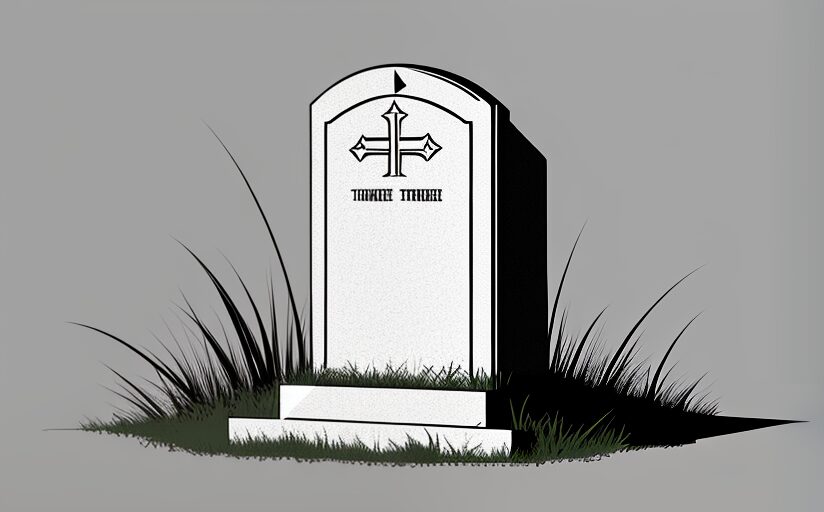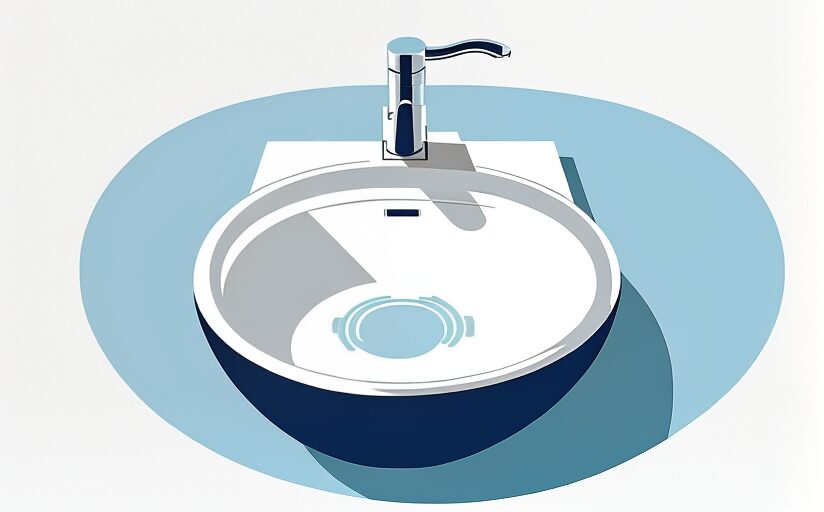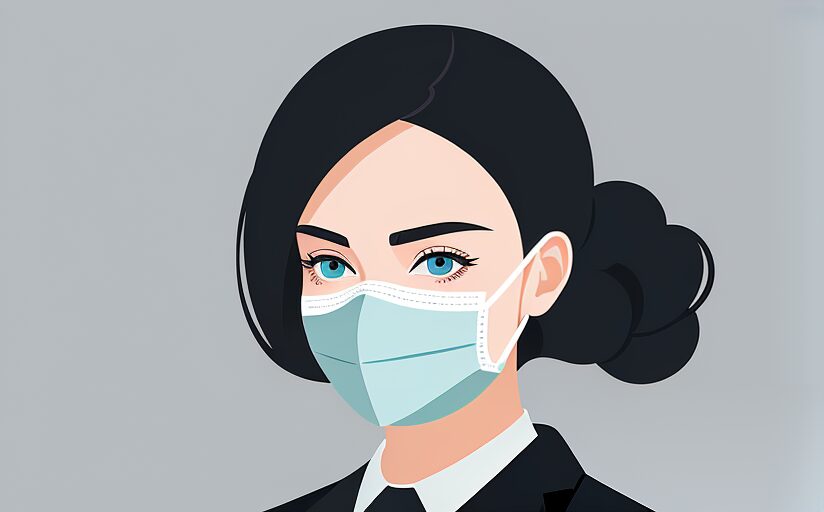This AP style coronavirus topical guide was created in accordance with AP Stylebook guidelines. The entries listed can help you produce informative and accurate articles about the coronavirus, COVID-19 and associated topics.
Coronaviruses
There is a virus family known as coronaviruses that include many types of individual viruses. These viruses have spikes protruding from their surface that reminded researchers of a crown, thus the name meaning “crown virus.”
The individual viruses can affect both people and animals with a wide variety of symptoms that range from mild to life-threatening. The viruses can cause common colds, MERS (Middle East respiratory syndrome), SARS (severe acute respiratory syndrome) and COVID-19.
Referring to a singular coronavirus should only occur in headlines and in such instances: Susan was anxious over coronavirus safety issues.
In all other cases, include the article the.
- Correct: The mayor stated the coronavirus cases are rising.
- Incorrect: Susan was anxious about coronavirus.

COVID
Never refer to the coronavirus as only COVID unless you are quoting someone or using the term as a proper name.
COVID-19
COVID-19, or coronavirus disease 2019, is the latest disease discovery in the coronavirus family and is believed to have first appeared in Wuhan, China, in late 2019.
Common COVID-19 symptoms include coughing, trouble breathing, fever, a sore throat, loss of smell or taste, and muscle pain. People with prior medical conditions may develop more life-threatening conditions such as pneumonia.
When writing stories about COVID-19, using the general term the coronavirus as an initial reference is acceptable. However, although the phrasing implies a single virus instead of a disease, the context usage clarifies the confusion. Other first references that are acceptable when talking about the virus include the new virus or a new coronavirus.
Use COVID-19 when referring to the disease that is caused by the virus. It is not correct to write COVID-19 spreads through the air, because COVID-19 is not the virus. Instead, write the coronavirus spreads through the air.
When writing about COVID-19 or the science behind the disease, clear and concise distinctions are important. Rather than use general references or terms, be specific.
SARS
When reporting on specific coronaviruses, it is acceptable to first refer to the disease as SARS, as long as the 2003 Asian virus is identified later in the article as severe acute respiratory syndrome.
When referring to SARS-CoV-2, it’s acceptable to say the virus that causes COVID-19 and the COVID-19 virus. Do not say a new virus called COVID-19, because COVID-19 is the disease, not the virus.
MERS
MERS can be used as a first reference for the 2012 Middle East Respiratory Syndrome once the disease’s name is spelled out later in the article.
Antibodies
The human body has an immune response known as antibodies that fight infection. By using a blood test to identify different types of antibodies, traces of previous infections within the body can be detected. Current or active infections are not easily identified using a blood test, but there are other tests that can better recognize those active illnesses or diseases.
- Ex: The body immediately employs antibodies to combat infections before they can be detected using blood tests.
Anti-Inflammatory
An anti-inflammatory is a product or drug used to relieve pain and reduce inflammation within the human body. The most popular types are NSAIDs.
- Ex: Since inflammation in joints can cause immense pain, over-the-counter NSAIDs are a popular anti-inflammatory remedy.
Antiseptic, Disinfectant
Antiseptics are used on living things to remove or kill germs. Disinfectants kill germs on inanimate objects. The correct adjective is disinfectant, not disinfecting.
- Ex: Children love using brightly colored hand sanitizing antiseptic products.
- Ex: The school used a disinfectant bleach on chairs and countertops.
Antiviral (n., adj.), antivirus (adj.)
When referring to antiviral or antivirus, no hyphen is needed. In general terms, use antivirus, but when using medical references, refer to antiviral.
- Ex: The antivirus controls were difficult to implement.
- Ex: The antiviral drug production date was pushed back for the second time.

Asymptomatic
Avoid medical jargon when possible. Rather than refer to the term asymptomatic, use phrases such as without symptoms or no symptoms.
- Ex: Although Phillip felt no symptoms, he was sure he was suffering from the flu for the third time that season.
Bandanna
The bandanna is a square of fabric made popular during cattle drives in America after the Civil War.
- Ex: Two Colorado residents were wearing bandannas as face coverings.
Cancel, Canceled, Canceling, Cancellation
When something is canceled, it is made void. When writing for American publications, use cancel, canceled, canceling, and cancellation.
- Ex: The reporter announced the rally was canceled due to rain.
CARES Act
Unless you are quoting a direct reference to the Coronavirus Aid, Relief and Economic Security Act, avoid mentioning the CARES Act. When referring to the United States’ $2.2 trillion aid package for workers and businesses, use expressions such as the coronavirus aid bill, the coronavirus relief bill or the coronavirus rescue package. Do not refer to the relief money as stimulus aid, because the bill was issued to replace money lost in the economic collapse caused by the coronavirus shutdown, not stimulate the economy.
- Ex: Senators battled long into the night to come to an agreement over the coronavirus aid bill.
Cases
Do not refer to people as cases when reporting the coronavirus, and refrain from the redundant and incorrect phrase positive cases.
- Incorrect: Forty positive cases were reported yesterday.
- Correct: Forty people tested positive yesterday.
Centers for Disease Control and Prevention
Use Centers for Disease Control and Prevention on the first reference for the U.S. Department of Health and Human Services department located in Atlanta. Clarify with preceding terms such as federal, national or U.S. as needed. Using CDC upon further reference is acceptable, but use a singular verb.
- Ex: The Centers for Disease Control and Prevention is closed for a long weekend. Posted window signs noted the CDC will open for regular business hours on Tuesday morning.
Contagion
Do not use the phrase contagion in your writing. Illness, virus or disease are usually better to use.
- Ex: News of the illness and related symptoms quickly spread across the village thanks to the hometown newspaper.
Contact Tracing
Contact tracing is the process of monitoring or tracking people thought to be in close proximity to someone known to be infected with a disease. Do not place the term in quotation marks. If using the phrase as a modifier, include a clarifying hyphen.
- Ex: The government’s contract-tracing program gained momentum.
When possible, rephrase or add variety with terms such as close contact or close proximity.
- Ex: The agency is working to identify individuals who came into close contact with Sam Jones at the nursing home.
Data
General use of the term data for large audiences or journalism contexts uses singular pronouns and verbs. When reporting or writing for academic or scientific papers, use plural pronouns and verbs.
- Ex: The New York Post’s data is sound.
- Ex: The National Academy of Sciences reported data signifiers about the different coronavirus symptoms.
Use database and databank as one-word identifiers, but data processing (as both a noun and adjectives) and data center without hyphens.
- Ex: The New York coronavirus data center was overwhelmed with new patient information in March.

Death, Die
When individuals die, report the death. Euphemisms such as passed away, passed on or departed soul should be avoided except in direct quotes.
- Ex: When John McCain died, foreign dignitaries attended the funeral.
Diseases
Common names for diseases should never be capitalized. This includes leukemia, cancer, hepatitis, emphysema, etc. If referring to a disease known by a geographical area or a person’s name, only capitalize the referring proper noun, such as Parkinson’s disease or West Nile virus.
Avoid generic or victimizing reporting such as: John is a stroke victim, and his wife is battling COVID-19. Instead, use more precise terms.
- Ex: Joe had a stroke, and Suzannah has esophageal cancer.
Distances, Time Periods
Distances are represented by numerals.
- Ex: Stay 6 feet apart when standing in line.
Numbers under 10 referring to months, days, years or weeks are spelled out.
- Ex: The cough lasted eight days.
Distance Learning (n., adj.)
Distance learning is a phrase denoting education using computers at home instead of attending in-school classrooms. No hyphen is required.
- Ex: Sonny signed up for three distance learning classes.
Doctor
Use the designation Dr. or Drs. (plural) in the first reference before the name of a professional individual who holds a medical or dental doctoral degree. This includes doctor of medicine, doctor of pediatric medicine, doctor of optometry, doctor of dental surgery, and doctor of veterinary medicine.
- Ex: Dr. Deborah Birx held a press conference yesterday to discuss the pandemic.
While other individuals may hold doctorate degrees, do not use the title of Dr. before their name. Instead, note the person’s credentials or expertise when referencing them. Use as many details as necessary.
- Ex: John Jones’ degree in immunology uniquely qualified him to lead a virology team at the Centers for Disease Control and Prevention.
Drive-thru
The action of staying inside your vehicle, moving through the area, and still receiving information, services or goods is known as a drive-thru process. Hyphenate in all instances.
- Ex: The drive-thru pharmacy only had three cars in line.
Epidemic, Pandemic
Epidemic and pandemic should not be used interchangeably, so look to public health official declarations to identify which to report. A disease that spreads rapidly through an area or group is called an epidemic, but when an epidemic spreads worldwide, it is referred to as a pandemic. Do not use the term global pandemic, because it is redundant.
- Ex: The World Health Organization identified COVID-19 as a pandemic on March 11, 2020.
Exposure
Exposure occurs from close proximity to or coming into contact with a substance considered harmful. That exposure can lead to illness or infection. People are never tested for exposure to the virus. Individuals are tested to see if they are infected with the virus.
- Ex: To prevent exposure to the newly discovered disease, people began to work from home and shop online.
Front Line(s) (n.), Front-line (adj.)
When using front line, differentiate the adjective from the noun with a hyphen.
- Ex: Front-line doctors wore personal protective equipment to shield themselves from exposure to the disease.
Good Samaritan
A good Samaritan is someone who stops to help another person in distress. Always capitalize Samaritan because the name represents a geographical location.
- Ex: The good Samaritan rescued the kitten from the tree.

Hand-washing
The importance of hand-washing to eliminate the spread of viruses came to light during the COVID-19 pandemic. Include a hyphen.
- Ex: The doctor suggested hand-washing can prevent the spread of the virus.
Health Care
When reporting on health care, always use two words.
- Ex: The health care office opened early Monday morning for vaccination appointments.
Home schooling (n.), Home-schooler (n.), Home-school (v.), Home-schooled (adj.)
Only the noun home schooling does not carry a hyphen.
- Ex: Alexandra’s parents decided to home-school their gifted child.
Hot Spot
A hot spot is an area with a sudden rise in numbers of an identified disease or infection.
- Ex: The clusters mentioned by WHO were considered infectious disease hot spots.
Hydroxychloroquine
Hydroxychloroquine has been used for decades to treat malaria, lupus and rheumatoid arthritis. During the early days of the COVID-19 spread, the Food and Drug Administration authorized the emergency use of hydroxychloroquine to treat the disease. The authorization was rescinded on June 15, 2020, but doctors still have access to the drug and can still treat patients for alternate issues and for COVID-19 using an off-label prescription.
- Ex: Dora Mae took hydroxychloroquine for two weeks as part of a treatment plan for malaria.
Incubation Period
An illness’s incubation period is the length of time between the first contact with an infectious person and the appearance of the disease or the onset of symptoms.
- Ex: Doctors warn the incubation period of the new coronavirus is two weeks.
Isolation, Self-isolation, Quarantine
There can be confusion when using the terms quarantine and isolation interchangeably, but in terms of common usage, it is permitted in AP stories when discussing the pandemic.
It should be noted that the CDC distinguishes between the two. A quarantine restricts the actions or movements of individuals thought to be exposed to a disease. The quarantine provides time to see if the person presents symptoms. On the other hand, isolation is the act of separating already sick individuals from healthy people in a way that prevents contact or the spread of disease. Self-isolation occurs when individuals voluntarily remove themselves from society while indications or symptoms of an illness are present.
- Ex: Individuals exposed to COVID-19 are asked to self-isolate for two weeks.
Webster’s New World College Dictionary defines quarantine in broader terms that include restrictions of movement, passage or travel to prevent contagious infections, illnesses or diseases from spreading.
- Ex: The panel discussed implementing a quarantine but dismissed the idea as too extreme given the limited information available at the time.
Lock down (v.), Lockdown (n., adj.)
When reporting information about either a lockdown or lock down, take care to define what you mean in the article. The word usage should not be left to individual interpretation.
- Ex: Three states requested their citizens lock down for two weeks.
Masks, Respirators, Ventilators
Although there are differences between masks, respirators and ventilators, the average reader may not differentiate the terms when reading an article.
An N95 mask, for example, is a cup-shaped mask that covers the mouth and nose and filters the air. Health care and construction workers typically use N95 masks. Technically, N95 masks are respirators, but AP prefers the term masks to avoid confusion.
N95 masks are different from surgical masks, which are loosely worn over the mouth and nose.
A ventilator is a type of machine used to help people breathe. It is acceptable to use breathing machine.

Medical Job Titles
Using scientific or medical titles when writing can be cumbersome or lead to confusion, so avoid the terms whenever possible. Instead, identify an individual’s expertise in simple terms.
Instead of epidemiologist, use public health researcher.
Instead of pulmonologist, use lung specialist.
Instead of virologist, use virus expert.
If you mention a government title in your article, use the complete job title.
- Ex: The conference announced that state Epidemiologist Mira Sanchez would be the guest speaker.
Multisystem Inflammatory Syndrome in Children (CDC term); Multisystem Inflammatory Disorder in Children and Adolescents (WHO term)
Both multisystem inflammatory syndrome in children and multisystem inflammatory disorder in children and adolescents should be avoided when following AP style. As an alternative, refer to the conditions as a rare inflammatory syndrome (or condition) linked to the coronavirus and occurring in children.
- Ex: The CDC stressed that the number of children affected by the rare inflammatory condition is still unknown.
National Institutes of Health
There are 27 specialized institutes that make up the National Institutes of Health. As the principal biomedical research arm of the Department of Health and Human Services for the United States federal government, the National Institutes of Health should always be capitalized. It is acceptable to use NIH for a second reference.
- Ex: The National Institutes of Health issued a joint letter of concern about the coronavirus.
Nonessential
An item that is not necessary is considered nonessential. Treat it as a single word and do not hyphenate.
- Ex: The use of antibacterial spray after a shower was considered nonessential.
Patient
An individual who has been or is currently being treated by a medical professional is considered a patient. Since most people who contract the virus never seek medical help and never become hospitalized, avoid referring to individuals in the general population as patients.
- Ex: The hospitalized patients with COVID-19 were kept in an isolated wing to prevent the disease’s possible spread.
Pathogen
Due to possible confusion, avoid using the term pathogen. Use viruses or bacteria instead, depending on the context. Germs or bugs are acceptable only as generic terms.
- Ex: Hand-washing was shown to diminish the spread of the virus.
Percent, Percentage, Percentage Points
Care should be taken when reporting percent, percentage and percentage points because of possible confusion.
When reporting percentage with a numeral, use the % sign without a space.
- Ex: The stock market was up 4.7%, to the surprise of most economists.
Sentence constructions using the % sign should use the singular verb when they stand alone. Use the % sign if an of construction follows a singular word, too.
- Ex: The teacher said 65% is considered a failing grade.
- Ex: The school reported that 75% of the sorority was at the rally.
However, use a plural verb following the of construction and a plural word.
- Ex: The school reported that 75% of the sorority sisters were at the rally.
Avoid using percentages at the beginning of sentences. If unavoidable, spell out the full term.
- Ex: Ninety-eight percent of babies are born without teeth.
When reporting percentages, do not use fractions, and when reporting ranges, it is acceptable to use 10%-18%, 10% to 18% and between 10% and 18%.
- Ex.: The housing mortgage rate continues to drop below 3.6%.
- Ex.: New home buyers grew in number in March from 6% to between 8% and 9%.
Avoid reader confusion between percentage and percent. When not used with a number, use percentage.
- Ex.: The percentage of people waiting in line for testing grew quickly.
Percentage point and percent are also confused. A change from 10% to 15% is a five-point rise, or a change of 5 percentage points. This is not the same as a 5% change. It’s actually a 50% increase.
- Ex.: He was shocked when the news reported the 30% increase in virus spread.
Take care when reporting percentage points.
- Correct: The voter turnout rose by a 0.34 percentage point.
- Incorrect: The voter turnout rose by 0.34 of percentage points.
- Incorrect: The voter turnout rose by 0.34 of a percentage point.
Don’t use numbers and figures when casually reporting percentages — use words instead.
- Ex: She has a zero percent chance of winning.

Personal Protective Equipment
Equipment used to minimize personal exposure to hazards that cause illnesses or injuries is referred to as personal protective equipment. Refrain from using PPE when possible. If directly quoting an individual, identify the phrase by spelling it out later in the article.
- Ex: Cleaning the asbestos out of the basement required personal protective equipment.
Preventive
Use preventive, not preventative.
- Ex: Doctors discovered it only took a small dose of the preventive medicine to thwart the illness.
Reopen
When mentioning the reopening of a closed building or business, do not hyphenate the term.
- Ex: The notice stated the gym would reopen on Monday morning.
Remdesivir
Developed by Gilead Sciences, remdesivir is an experimental antiviral medicine approved for emergency use on COVID-19 patients by the U.S. Food and Drug Administration. Used only within hospitalized settings, the drug is given intravenously. Since remdesivir is not a brand name of the medicine, do not capitalize the term.
- Ex: The doctor ordered a remdesivir IV catheter for the seriously ill patient.
Risk
A risk that occurs within one group when compared to the risk associated with other groups is referred to as relative risk. Scientific studies often express the number in ratios or fractions. When no specific difference is mentioned, the ratio is assumed to be 1. If your reference study states the relative risk of getting COVID-19 for a group of children in the United States is 1.5 times more likely compared to children in England, report specific numbers. In this case, children in England would be 50% less likely to get COVID-19 than children in the United States. Don’t refer to how likely the individuals would be to get the disease unless you know the absolute risk data.
The risk of something occurring is referred to as an absolute risk. When reporting absolute risk numbers or percentages, include both views for a complete story. You do not need to refer to the term absolute risk. For example, reporting that a drug may extend a person’s life by 50% (the relative risk) may sound impressive, but the actual numbers may mean that someone may live six months after having medical treatments instead of four months on average without those treatments.
Shelter in Place (v.), Shelter-in-Place (adj.)
Individual interpretations of the terms shelter-in-place or shelter in place can differ widely, so explain what you mean.
- Ex: The governor authorized a shelter-in-place order to begin before Christmas.
- Ex: Many people decided to shelter in place for 10 days.
Shutdown (n.), Shut Down (v.)
Use shutdown (one word) as the noun form and shut down (two words) as the verb. Never hyphenate these phrases.
- Ex: The 10-day business shutdown was mandatory.
- Ex: The bakery shut down per the governor’s mandate.
Social Distancing, Socially Distancing
When reporting on social distancing or socially distancing individuals, no hyphens or quotation marks are needed.
- Ex: Social distancing is required when shopping in a grocery store.
- Ex: The family members have been socially distancing for two weeks.
Social distancing generally involves efforts to restrict gatherings of individuals. The main goal of the action is to slow or stop an infectious disease spread. Restrictions can include remaining 6 feet from other individuals, limiting the gathering number of people in events or homes, closing classrooms, shutting down or limiting public transportation, etc.
- Ex: Masks are required inside federal buildings, and all participants are asked to social distance.
Since social distancing is widely used and commonly known, there is no need to define the context. If new limitations or steps are required for the focus of the article, spell those steps out.

Stay at Home (v.), Stay-at-Home (adj.)
Use stay at home (no hyphen) for the verb form. The hyphen is necessary when used as a compound adjective: stay-at-home.
- Ex: To comply with the stay-at-home request, Louise began working from home.
- Ex: It was difficult for many people to stay at home and limit their shopping to once a week.
Telecommute, Telecommuting, Telecommuter
One of the significant changes society has experienced during the pandemic is the number of people that now work from home. Use telecommute, telecommuting and telecommuter when referring to working from home.
- Ex: The mayor tried to telecommute whenever possible but still found herself going to work three days a week.
Teleconference, Teleconferencing
A computer or telephone conference with participants in various locations is a teleconference.
- Ex: James went online to schedule a teleconference with his doctor when he developed a cough.
Telemedicine
When doctors see patients remotely because they cannot be physically present, the practice is known as telemedicine.
- Ex: The insurance allowed telemedicine calls due to the governor’s stay-at-home order.
Travel, Traveled, Traveling, Traveler
When reporting on movement, use travel, traveled, traveling or traveler.
- Ex: The American traveler was asked to quarantine for 14 days when he arrived in Ireland during the pandemic.
Underlying Conditions, Preexisting Conditions
Underlying conditions or preexisting conditions can leave readers confused when discussing COVID-19 and related death or illnesses. Use terms such as other health problems or existing health conditions to clarify the situation. Do not use a hyphen for preexisting conditions unless it is a direct quote.
- Ex: The health insurance no longer covered existing health conditions.
- Ex: Hospitalization was necessary due to several other health problems impacting his lungs.
Videoconference, Videoconferencing, Video Chat
Do not use hyphens for videoconference, videoconferencing or video chat.
- Ex: The video chat was deemed a failure when the system only allowed eight participants.
Virus’s
Virus’s is the singular possessive of virus. Do not use virus’.
- Ex: The virus’s spread through his neighborhood led Nigel Jones to self-isolate.
World Health Organization
The World Health Organization is based in Geneva. It is a United Nations health agency that sets international guidelines regarding treating global diseases and outbreaks. Refer to the extended name on first use, then second and further references can use WHO or the WHO.
- Ex: The World Health Organization issued alerts about the spread of virulent diseases.
If you cover stories related to the coronavirus and COVID-19, use this AP style coronavirus topical guide as a trusted reference. We’ll continue to update it as the AP Stylebook makes changes related to common usage. Don’t forget to check out our other blogs about AP style basics.


Leave a Reply